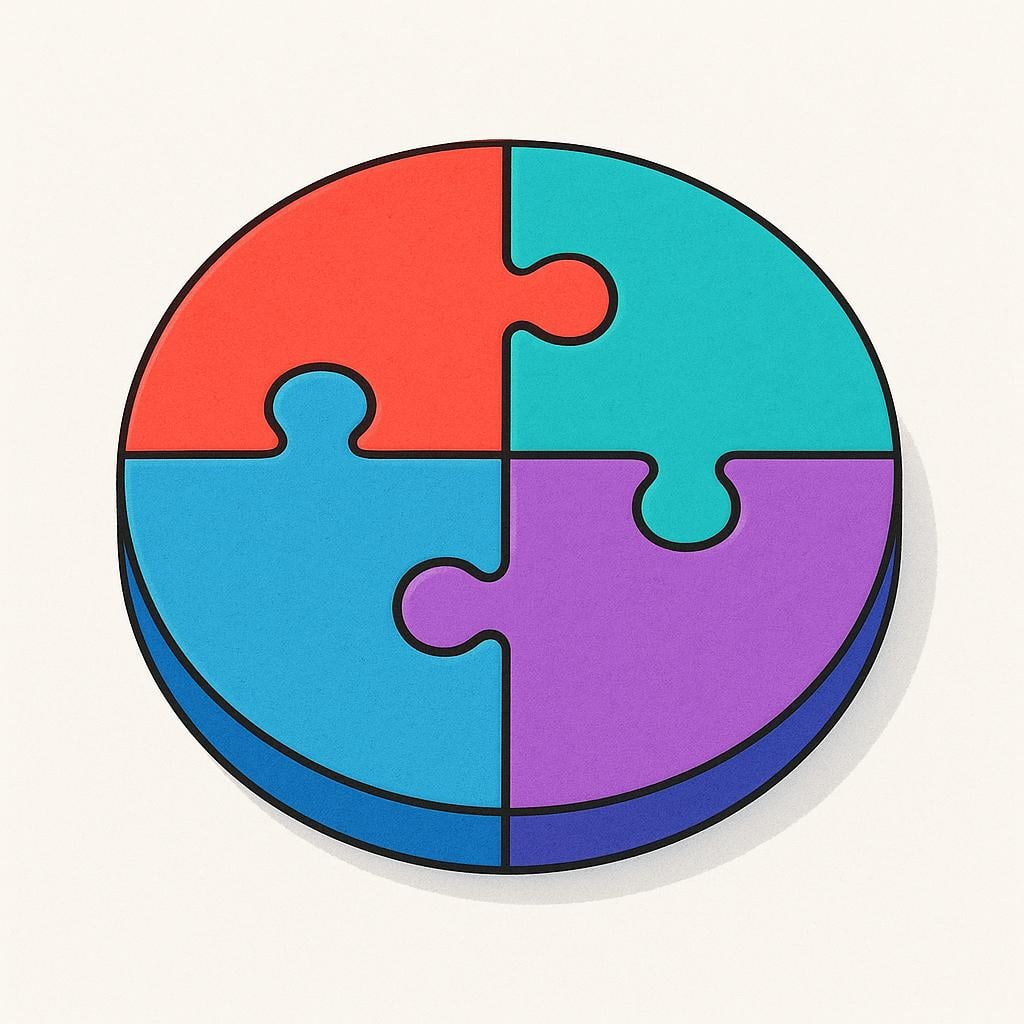completa
/kom-PLEH-tah/
complete

This image is completa (complete) because all the parts are present and fitted together.
📝 In Action
La información que diste es completamente completa.
A2The information you gave is completely complete.
Necesito la lista de compras completa antes de salir.
A1I need the full shopping list before leaving.
La luna llena está hermosa y completa esta noche.
B1The full moon is beautiful and whole tonight.
💡 Grammar Points
Matching the Noun
Since 'completa' is feminine, you only use it when describing feminine things, like 'la casa' (the house) or 'la historia' (the story). For masculine things, you must use 'completo'.
❌ Common Pitfalls
Using the wrong gender
Mistake: "El tarea está completa."
Correction: La tarea está completa. (Because 'tarea' is feminine, the adjective must match.)
⭐ Usage Tips
Completo vs. Lleno
'Completo' usually means something is finished or has all its required parts. 'Lleno' (full) is better used when talking about physical capacity, like a glass or a theater.

The cartoon figure completa (completes) the tower by placing the last piece.
completa(Verb)
(he/she/it) completes
?present tense action
,(you formal) complete
?present tense action
Complete!
?familiar command (tú imperative)
📝 In Action
Ella siempre completa sus proyectos a tiempo.
A2She always completes her projects on time.
Si usted completa el formulario hoy, podemos procesarlo mañana.
B1If you complete the form today, we can process it tomorrow.
¡Completa tu plato antes de levantarte de la mesa!
A2Complete (finish) your plate before getting up from the table!
💡 Grammar Points
The 'Tú' Command
The familiar command for 'tú' (you) uses the exact same form as the 'él/ella/usted' present tense form. So, 'completa' can mean 'she completes' or 'Complete! (you familiar)'.
❌ Common Pitfalls
Confusing the command forms
Mistake: "Completes el formulario (trying to use it as a command)"
Correction: ¡Completa el formulario! (The verb is the command, you don't need 'es' at the end.)
⭐ Usage Tips
Asking politely
If you want to ask someone politely to complete something, use the 'usted' form: 'Complete, por favor' (Complete, please).
🔄 Conjugations
indicative
present
imperfect
preterite
subjunctive
present
imperfect
✏️ Quick Practice
💡 Quick Quiz: completa
Question 1 of 2
Which sentence correctly uses 'completa' as a command?
📚 More Resources
Frequently Asked Questions
How do I know if 'completa' is a verb or an adjective in a sentence?
Look at the word next to it. If it follows a form of 'estar' or 'ser' (like 'está completa'), it's the adjective describing a feminine noun. If it follows a person (like 'Ella completa') or is the first word in a sentence followed by an exclamation mark, it's probably the verb 'to complete'.